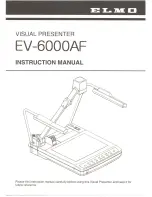
Version 1.6.24 BETA
JULY 25, 2011
©2011 RED.COM INC.
11
The RAW data recorded is independent of any RGB domain signal processing choices such as ISO, White
Balance or other RGB color space adjustments made by the camera operator. These parameters are
saved with the RAW data as reference METADATA; they are not burned into the recorded RAW data.
This recording technique permits RGB color processing choices to be deferred to post production and/or
to be adjusted in the field to visualize alternative color treatments, without impacting the recorded image.
The camera’s monitoring path converts RAW sensor data to a white balanced 12-bit depth 2048 x 1080
pixel RGB 4:4:4 video signal. This signal may be modified using ISO, White Balance or other RGB color
space adjustments as desired by the operator, and is then scaled and gamma corrected to provide
VIEWFINDER and HD-SDI monitor outputs at 10-bit depth in 4:2:2 Y,Cb,Cr, or at 8-bit depth in 4:4:4 RGB.
Frame guides and other camera data may be added as desired by the user to one or more of the outputs.
NOTE: If a specific set of RGB image processing values are desired to be repeatable on-set, a
.RMD “look” file may be created either by the camera or by supplied REDCINE-X® application
software.
HDRX™
HDRx is an option for extending dynamic range from +1 to +6 stops over the baseline Dynamic Range
offered by the camera. HDRx mode simultaneously shoots two images of identical resolution and frame
rate - a primary track (A-track) that is normally exposed, and a the secondary track (X-track) that has an
exposure value that reflects the additional stops of highlight protection desired.
EXAMPLE: If you select an HDR value of +2 and your primary exposure is 1/48th sec, the X-track
exposure will be 2 stops faster, 1/192 sec.
The ISO and Aperture remain the same for both exposures.
During acquisition and recording, the two tracks are "motion-conjoined", meaning there is no gap in time
between the two separate exposures. This is important to note because if they were two standard
alternating exposures, there would be a time gap between the two tracks that would show up as an
undesirable motion artifact. Both tracks (A & X) are stored in a single R3D® file. Since there are two
exposures, when in HDRx mode, the camera is recording double the amount of frames. For example, if
you are shooting 24fps, the camera is recording two 24fps tracks, which is the data rate equivalent of
48fps. However, after combining the two tracks in post production you see only one 24fps motion stream.
HDRx provides multiple options for exploitation in post production.
•
Blend the two tracks in post tools like REDCINE-X, Storm or any other application that supports the
SDK to create Magic Motion™. This blending of the two tracks comes with a slider so you can decide
just how much of each track you want to use. A preview window shows you the combined result of
your selection, or you can view each track individually.
•
Combine the two tracks using MNMB (More Normal Motion Blur). MNMB is designed to emulate the
motion of a traditional camera with full motion blur. This is a tool created by The Foundry that uses a
new motion estimation algorithm designed specifically for HDRx. The shorter exposure (sharper
image) is blended to match the motion blur of the normal exposure. Again, a preview window shows
the combined result of your selection, or you can view each track individually.
•
Use the X-track data for motion tracking, then combine the X-track with the A-track as in #1 or #2
above… or just motion stabilize the A-track using the motion analysis data extracted from the X-track.
Summary of Contents for EPIC MYSTERIUM-X
Page 1: ......
Page 2: ...THIS PAGE INTENTIONALLY BLANK...
Page 185: ...Version 1 6 24 BETA JULY 25 2011 2011 RED COM INC 183 BRAIN DIMENSIONS FRONT VIEW...
Page 186: ...Version 1 6 24 BETA 2011 RED COM INC JULY 25 2011 184 184 SIDE VIEW...
Page 187: ...Version 1 6 24 BETA JULY 25 2011 2011 RED COM INC 185 TOP VIEW...
Page 192: ......














































